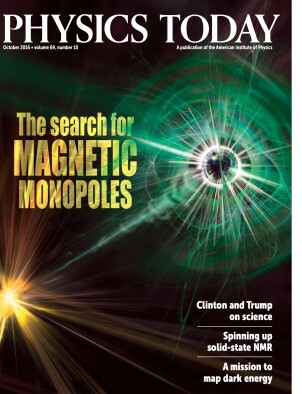High-velocity cloud blows Milky Way bubble
DOI: 10.1063/PT.3.3320
Spread through the disk of the Milky Way are about 20 vast bubbles of million-degree plasma wrapped in warm shells of neutral atomic hydrogen. Blowing up a so-called supershell to its typical size of 1000 light-years requires an energy, 1045 J, equivalent to at least 30 supernovas. Given that massive short-lived stars cluster in groups of a few dozen, it’s indeed possible that supershells are inflated by supernovas. But evidence for an alternative formation scenario has been uncovered recently by Geumsook Park of Seoul National University in Korea and her collaborators. The team used a seven-band receiver at the Arecibo radio telescope in Puerto Rico to resolve the spatial and velocity structure of a supershell known as GS040. At the very center of GS040 they found a high-velocity cloud (HVC). Such clouds contain a million or so solar masses of warm gas and fly through space at speeds 50 km/s higher than is typical for stars and other galactic components. According to previous calculations, when an HVC slams into the galactic disk, it launches a supersonic expansion of hot plasma that is energetic enough to form a supershell. That appears to be what led to the formation of GS040, which, given the shell’s current size, took place 5 million years ago. Where did the HVC come from, and how did it acquire its high speed? Park and her colleagues speculate that the HVC is either a fragment of a nearby galaxy that was tidally disrupted by ours or a leftover part of the intergalactic medium from which our galaxy and its neighbors formed. (G. Park et al., Astrophys. J. Lett. 827, L27, 2016, doi:10.3847/2041-8205/827/2/L27
